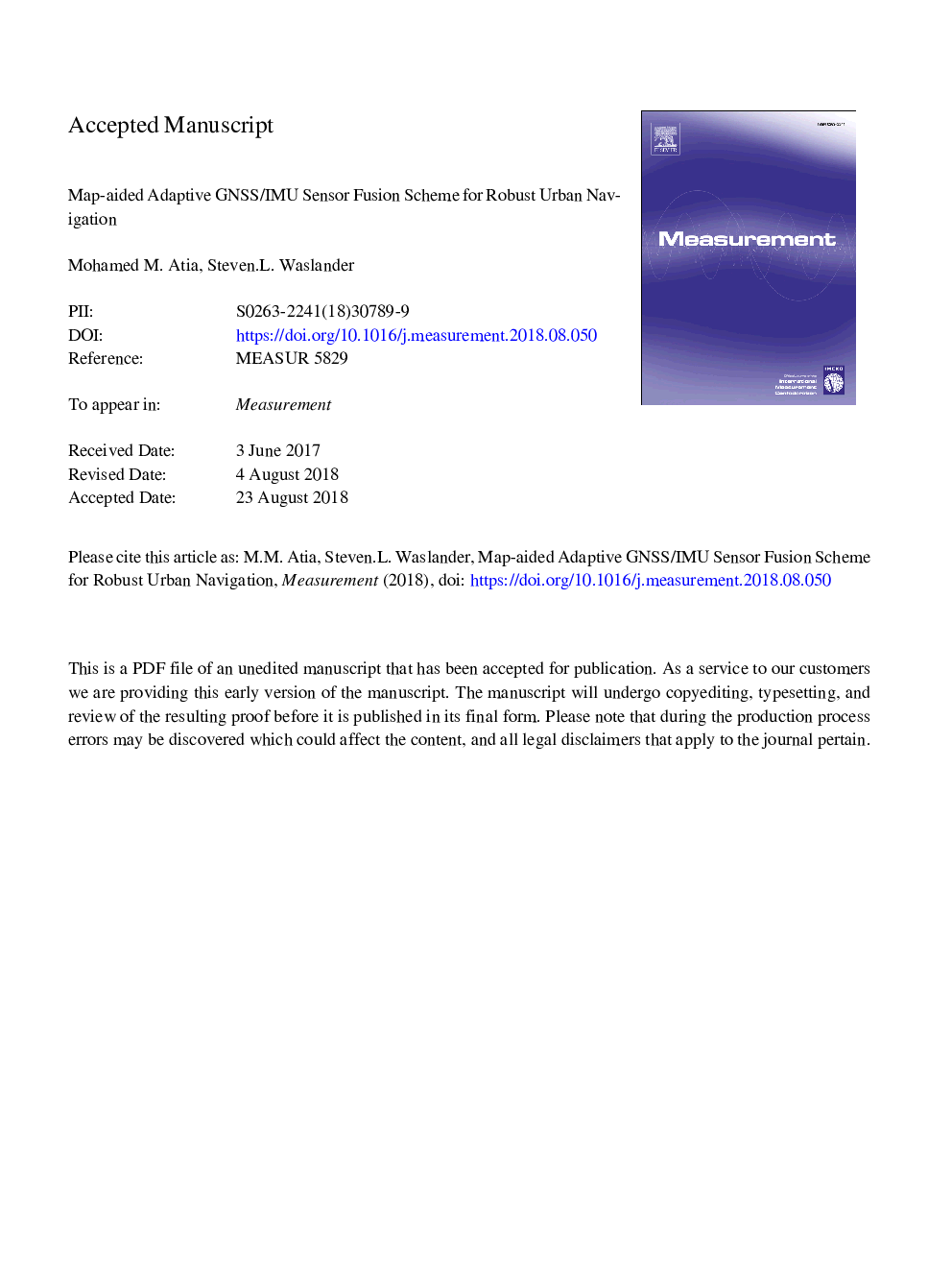| Article ID | Journal | Published Year | Pages | File Type |
|---|---|---|---|---|
| 9953698 | Measurement | 2019 | 16 Pages |
Abstract
Global Navigation Satellite Systems (GNSS) suffer from outliers and multipath errors in urban environments. Some errors can be mitigated by adaptive sensor fusion methods. However, existing adaptive fusion methods require multiple redundant measurements and they assume zero-mean noise. Therefore, they do not work under insufficient redundancy or biased measurements. This situation occurs in loosely-coupled integration of GNSS with inertial measurement units (IMU) in urban areas under GNSS multipath errors. This paper proposes a map-aided adaptive fusion scheme that uses map constraints to detect and mitigate GNSS errors in urban environments. After an initialization phase, the method estimates the currently active map segment using dead-reckoning and a robust map-matching algorithm that models the vehicle state history, roads geometry, and map topology in a Hidden-Markov Model (HMM). Viterbi algorithm is used to decode the HMM model and select the most likely map segment. The projection of vehicle states onto the map segment is used as a supplementary position update to the integration filter. GNSS measurement errors are detected and mitigated by a map-aided adaptive exponential weighting kernel. The proposed solution framework has been developed and tested on a land-based vehicular platform in downtown Toronto using a 3-Space IMU from YOST labs, a Ublox EVK-7 GNSS receiver kit, and digital road maps of Ontario. Results showed accurate map segment estimation in difficult roads intersections, forks, and joins. The adaptive GNSS fusion scheme proved to reliably mitigate biased GNSS position updates that are falsely reported as accurate by the GNSS receiver.
Related Topics
Physical Sciences and Engineering
Engineering
Control and Systems Engineering
Authors
Mohamed M. Atia, Steven L. Waslander,
